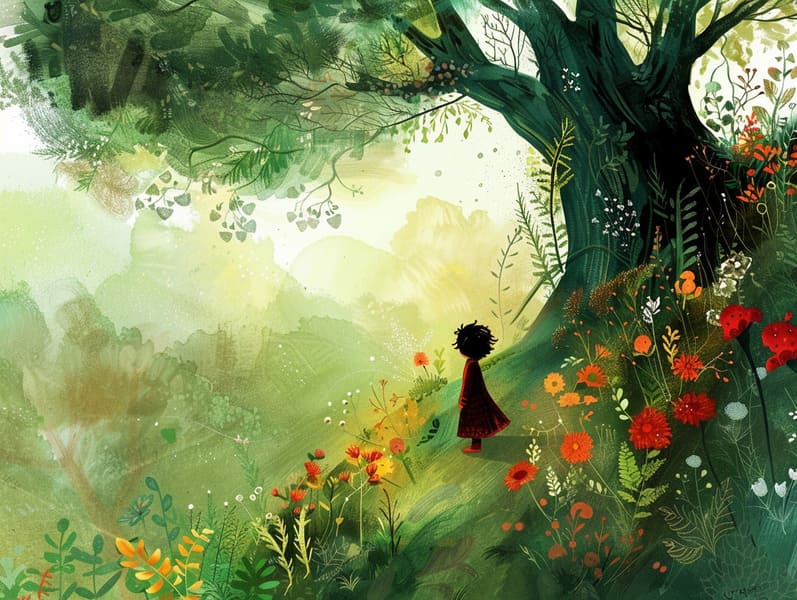A Brief History of Bedtime Fairy Tales with the Undying Grace.
A Brief History of Bedtime Fairy Tales with the Undying Grace.
Blog Article

Traditional fairy tales have timeless appeal. These stories have been whispered from one generation to the next far before they were ever written down. They sprang from a variety of backgrounds, including Asian traditions. They were initially shared among older generations, often carrying themes and messages relevant to the societal norms and beliefs of the time.
The Brothers Grimm, Jacob and Wilhelm (the Grimm brothers), were among the first to collect and release many of these beloved fairy tales. Their compilation, "Grimm's Story Collection," included classics like "Ashenputtel," "Little Brother and Little Sister," and "Snow White," which have since become mainstays in the world of traditional fairy tales. Similarly, Hans Andersen's whimsical fairy tales, such as "The Little Mermaid," and "The Little Duckling," have enchanted hearts worldwide, guaranteeing their place in the pantheon of beloved fairy tales.
Despite their age, these stories remain as applicable as ever, especially as children's night stories. These charming stories are now available in different formats, including richly illustrated books, captivating animations, and digital fairy tales.
Their enduring popularity can be ascribed to several charming aspects:
Significant Morals: Old fairy tales often impart important moral lessons. Fairy tales like "The Shepherd Boy and the Wolf" teach the merit of truth, while "The Tale of the Tortoise and the Hare" emphasize the traits of determination and meekness. These stories offer children clear distinctions between good and bad, guiding their moral compass in a kind yet profound way.
Sympathy and Perception: Ancient fairy tales frequently feature heroines facing challenges and problems, inspiring children to feel with their struggles and back their triumphs. For instance, "Beauty and the Beast" illustrates the benefit of looking deeper to appreciate the inner core of a soul, fostering empathy and recognition.
Cultural Recognition: Many traditional fairy tales are interwoven with the cultural contexts from which they sprang. Engaging with these stories can provide informative snapshots into different societies, enhancing a sense of world respect and understanding.
Fantasy and Imagination: The fantasy-filled elements in ancient fairy tales—talking beasts—fire up children’s creativity. These stories transport readers to enchanted realms, promoting innovative thinking and a sense of amazement that remains a lifetime.
Old fairy tales are not only bewitching but also educational. They function as fascinating tools in enhancing various mental and emotional abilities in the young. When old fairy tales are read aloud, they foster speaking abilities by presenting new linguistic elements and intricate sentence structures. This practice also enhances auditory perception and concentration, as children remain attentive, keen to see what happens next.
Furthermore, deliberating the themes and characters of ancient fairy tales can nurture reasoning skills and intellectual skills. The young are educated to spot patterns, forecast, and catch on to cause and effect. These discussions also benefit children articulate their thoughts and feelings, enhancing their emotional intelligence.
In today’s digital age, the presence of web-based fairy tales has made these tales more attainable than ever. Internet sites and online apps provide extensive collections of Grimm's fairy tales that can be viewed or listened on anytime, anywhere. Fairy tales spoken are particularly in demand, supplying an interactive way for the young to savor these spellbinding stories. Voice books and read-out-loud stories move characters and settings to life, often joined by mesmerizing audio effects and musical scores that amplify the narrative journey.
The timeless charm of traditional fairy tales lies in their ability to alter to contemporary times while holding onto their basic principles. Contemporary updates of these tales often bring in more inclusive characters and modern settings, making them relevant to today’s audience. However, the key lessons of fearlessness, kindness, and fairness remain unchanged, continuing to connect with find it here young listeners of all ages.
Traditional fairy tales also offer a sense of assurance and knowability. They feature a well-arranged narrative with a recognizable beginning, middle, and end, often winding up with the conclusion of conflicts and the triumph of good over bad. This steadiness can be heartening for the young, giving a sense of steadfastness in an ever-changing world.
Classic fairy tales continue to entrance and train new generations, maintaining their grandeur and relevance in modern society. As bedtime stories for kids, they confer upon a perfect blend of fantasy and learning, nourishing moral values, empathy, and creativity. The prevalence of internet fairy tales and the sought after status of fairy tales spoken validate that these traditional narratives remain reachable to new generations.
By defending and conveying these stories, we continue to praise the rich tapestry of inventiveness and cultural heritage. Whether you are discovering a vividly illustrated book, exploring a electronic collection, or listening via an read-aloud story, the charm of traditional fairy tales is always within reach. These stories reveal of the unceasing influence of storytelling and its ability to connect us across time and space.
No matter if you are discovering a colorful picture book, perusing a digital collection, or hearing an audiobook, the spell of old fairy tales is always within reach.
These stories reveal of the timeless presence of stories and its ability to draw us together across generations and cultures, forming a connection that delights and instructs alike.